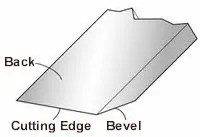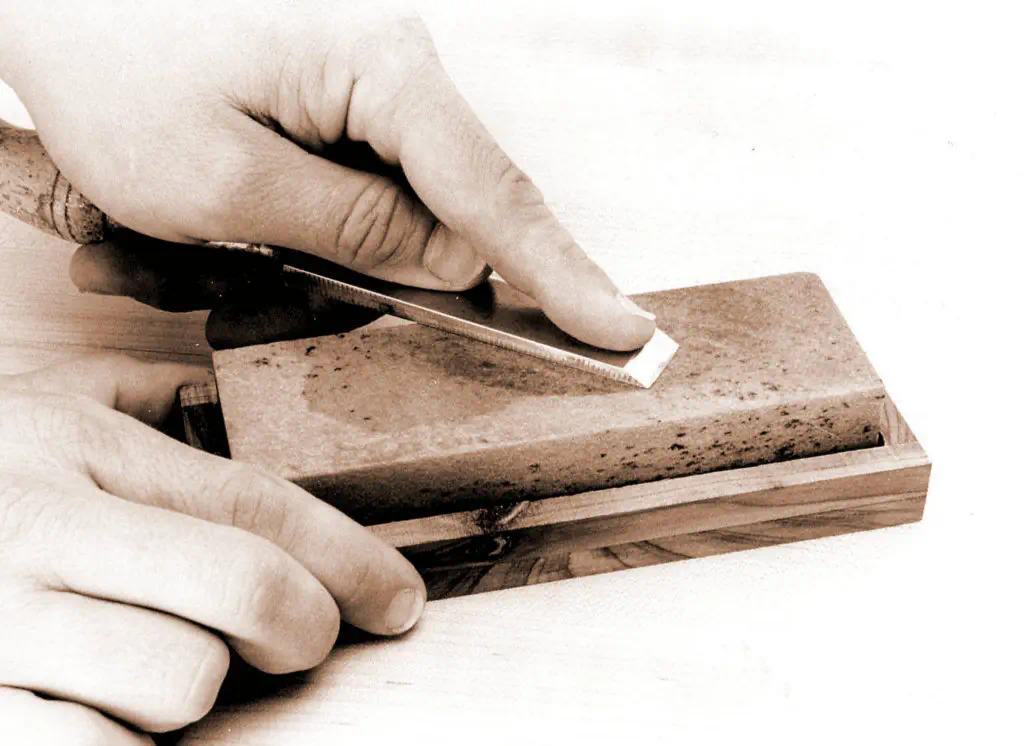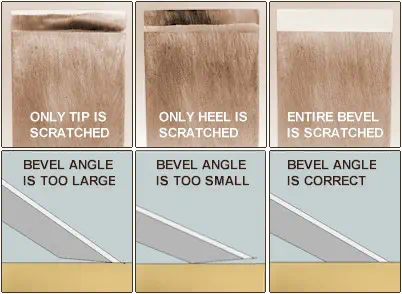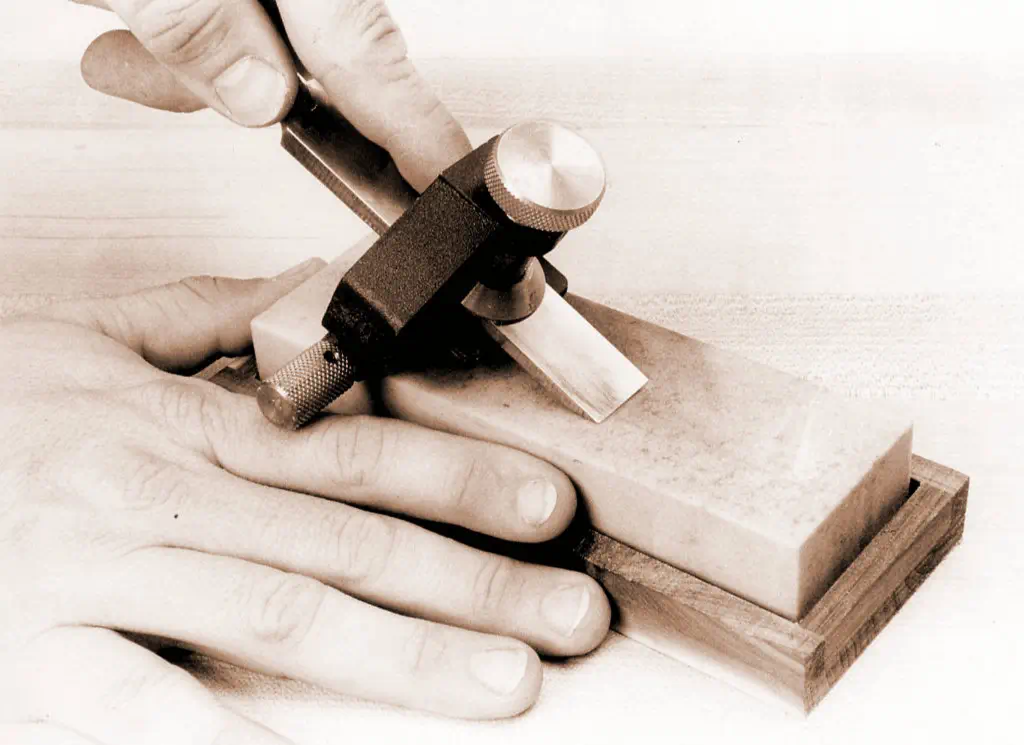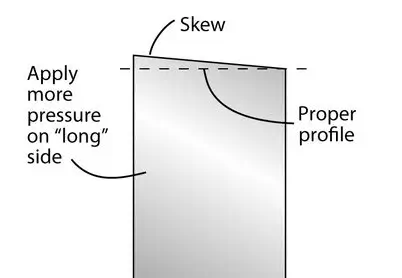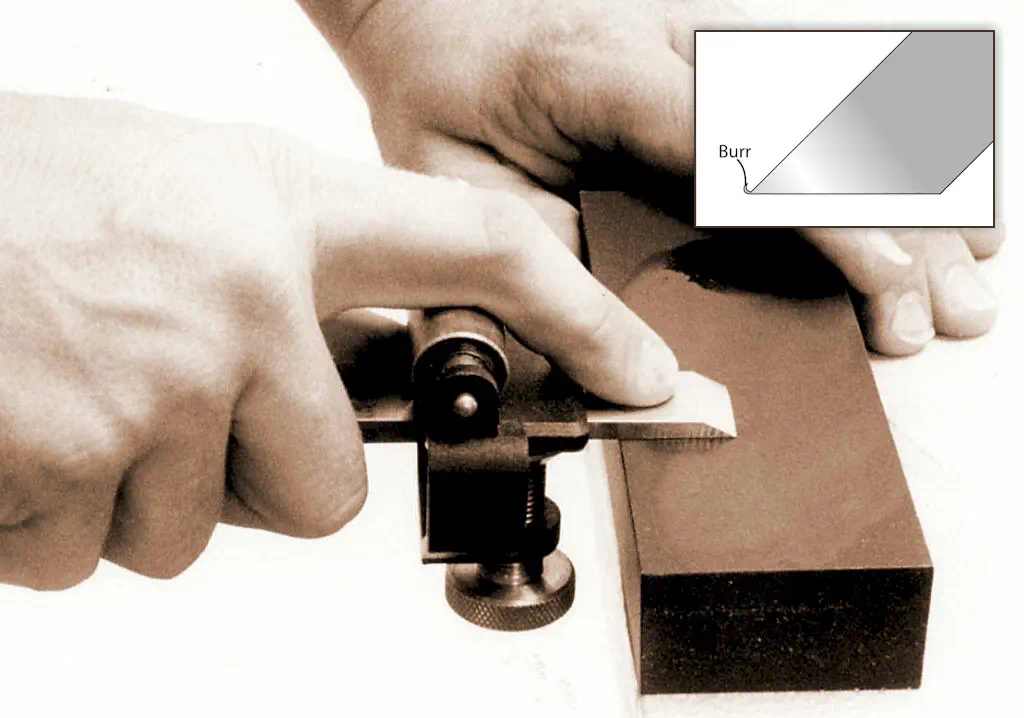SHARPENING A STRAIGHT EDGE
1- The first time you sharpen a
chisel or a
plane iron, flatten the back. Start with a coarse
abrasive.
Press the back against the stone and rub it back and
forth
until the scratch pattern covers the entire back. Work
your
way through finer stones, finishing the back to the
same
degree that you plan to finish the bevel. NOTE: Once
the
back is flat, there’s no need to grind it again. In
fact,
you shouldn’t touch it except to briefly rub it across
a
fine stone or strop to remove burrs. If you grind the
back
each time you sharpen the chisel, the blade will grow
thin
and fragile.
